
Citrus leafminer
Summary
Citrus leaf miner, Phyllocnistis citrella, is a small moth pest of citrus. The larvae mine immature foliage, causing twisted and curled leaves (Figure 1). Severe infestations (≥ 2 mines per leaf) can retard the growth and yield of nursery and newly planted trees, but their effect on mature trees is less serious. Such infestations usually only occur in late summer and autumn and are often related to low natural predator activity. They rarely occur in spring because the production of new growth is prolific and synchronised, and quickly becomes immune to attack.
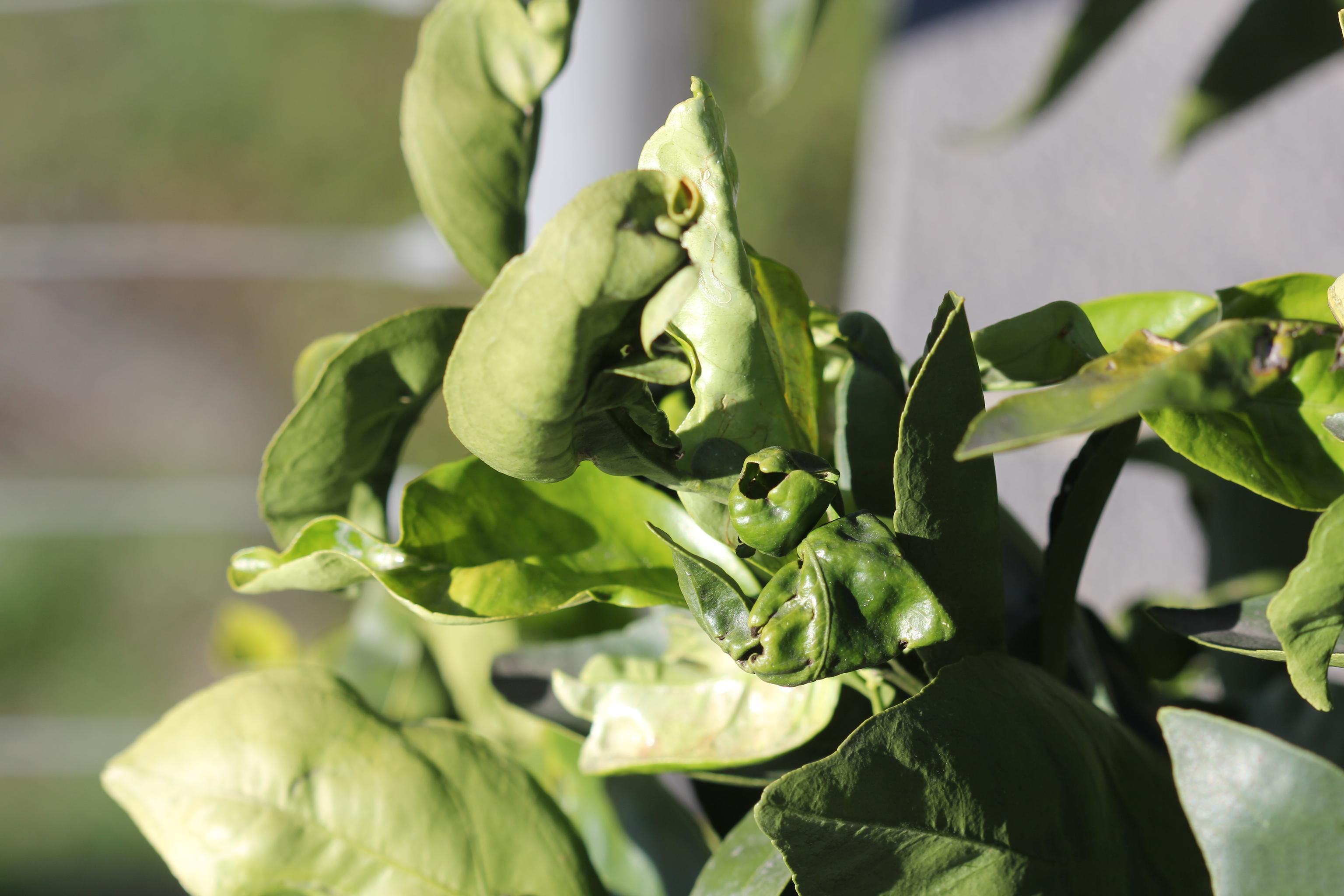
The citrus leaf miner is native to eastern and southern Asia and is now widely distributed where citrus is grown in Asia, Papua New Guinea, Australia, northern and central Africa, and Florida in the United States of America. It has been linked to the severity of citrus canker (Xanthomonas axonopodis pv. citri), a serious disease of citrus (Figure 2).
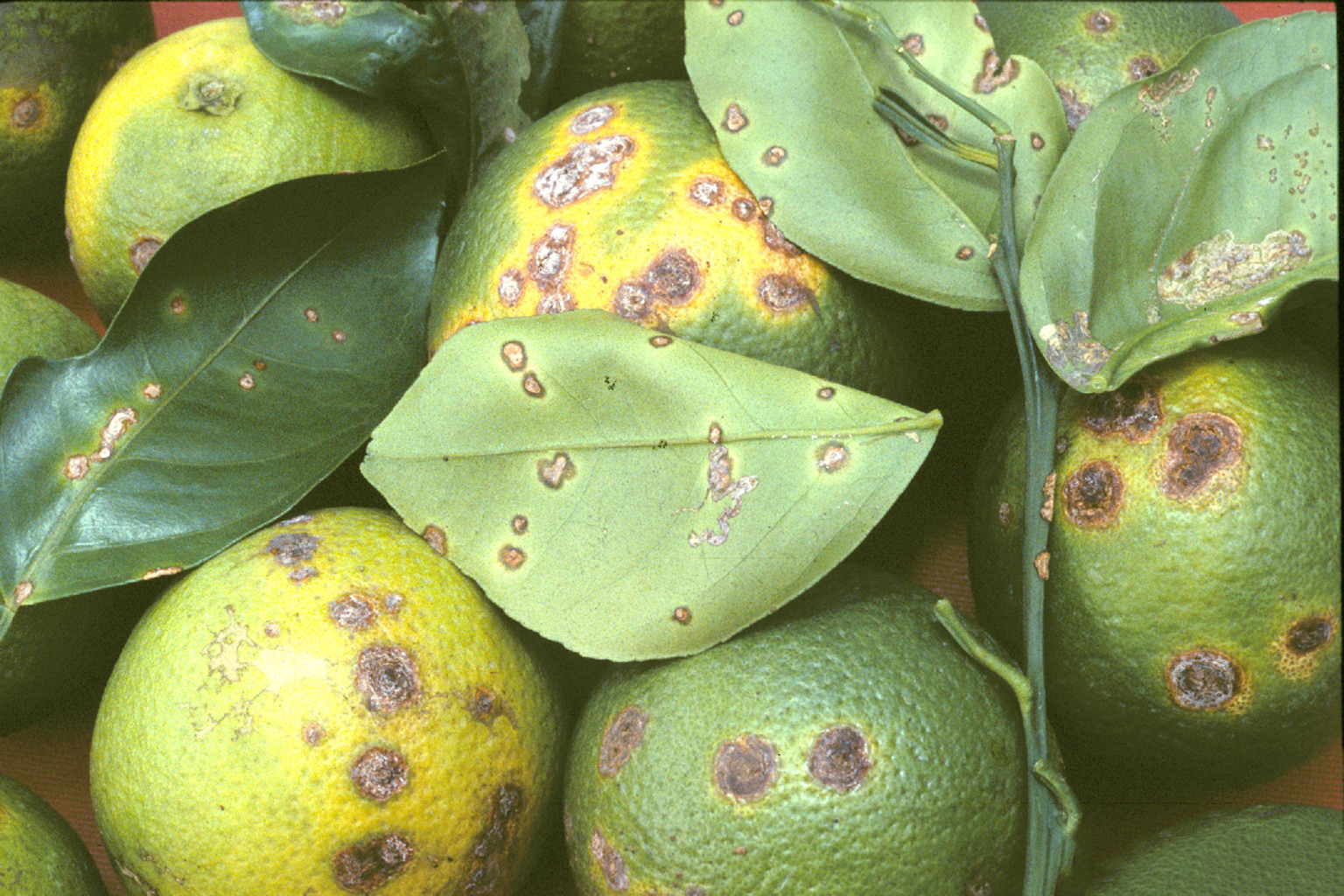
The moth was first recorded in Australia in and around Darwin in the Northern Territory in 1912. It was probably present earlier and was apparently eliminated in 1922 after a five-year campaign to eradicate citrus canker. During the campaign, all citrus trees north of the nineteenth parallel in the territory were destroyed. Since then, rigorous quarantine measures have been in force to prevent the disease from establishing in Australia.
In 1940 citrus leaf miner was again found in Darwin and in 1965 it was recorded at Cairns in Queensland. Between 1965 and 1985 it spread slowly southwards along the east coast to the NSW south coast. In 1988 it was still only found in the Northern Territory and the coastal districts of NSW and Queensland and was affecting less than 20% of the Australian citrus industry.
In 1989 it was recorded in inland NSW for the first time in orchards and home gardens from Dubbo north. Between 1989 and 1992 it spread westward into the Murrumbidgee Irrigation Areas, to Hillston, and the NSW and Victorian River Murray districts east of and including Swan Hill. By January 1993, it had reached the NSW/Victorian Sunraysia and South Australian Riverland districts. By April 1995, it had spread across the continent to south-western Western Australia.
Description and biology
Under favourable summer and autumn conditions, a generation (adult to adult) is completed in 14 to 17 days. In late autumn, winter and spring, it can take 2 or 3 times longer.
Adults
The adults are small, delicate moths with narrow paired forewings and hindwings fringed with long hairs (Figure 3). The upper surface of each forewing has a black dot at the tip, and an irregular dark line separating an inner region (covered with silvery scales) from an outer region (with silver, light yellow and brown scales). The hindwings are narrower than the forewings and are covered with silvery scales. At rest, with their wings folded lengthwise, the moths are about 2 mm long. In flight, their wingspan is about 4.5 mm.
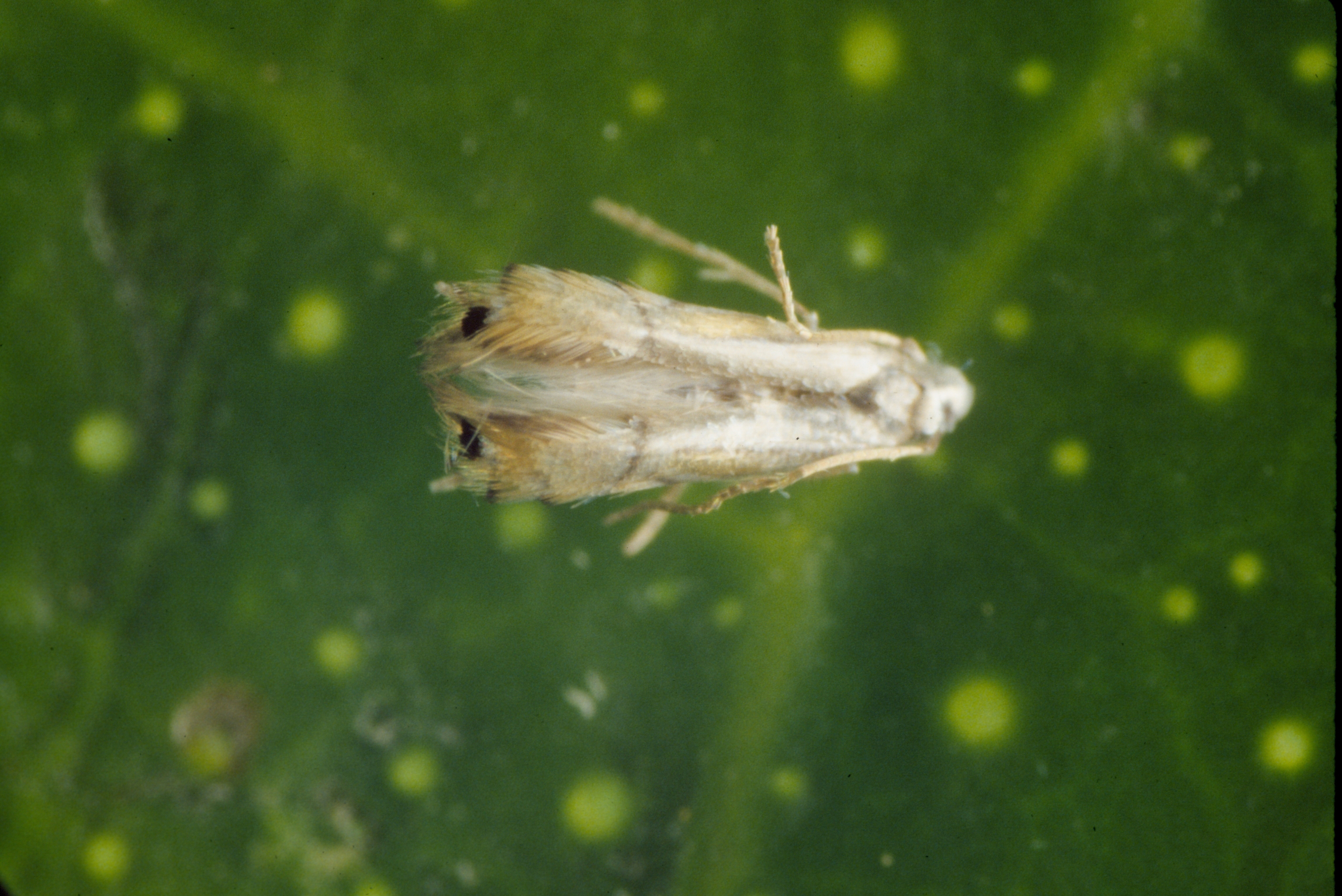
As flight generally occurs at night, the adults are rarely seen in daylight except when they are disturbed, generally by human activities. When this occurs, the flight is short and rapid. Females are slightly more common than males. Both sexes emerge from their pupal stage during the early morning hours. Mating generally occurs at dusk and in the early evening, about 9 to 12 hours after emergence.
Adult female moths start laying eggs about 24 hours after mating. A female can lay more than 50 eggs during her life and as many as 20 a night. Most adults live for less than a week but they can live for up to 20 days.
Eggs
The flat, slightly oval eggs are about 0.3 mm long. They are translucent but appear light green because of the leaf surface (Figure 4). Eggs are laid singly, generally during the evening, on the underside of leaves near the midrib. Egg deposition on the upper leaf surface is usually associated with very humid conditions and moderate or severe infestations. Hatching can occur within 1 day in summer and the young larva immediately burrow under the surface of the leaf. Young leaves 10 to 20 mm long are preferred sites for egg-laying. Eggs are rarely laid on leaves longer than 40 mm.
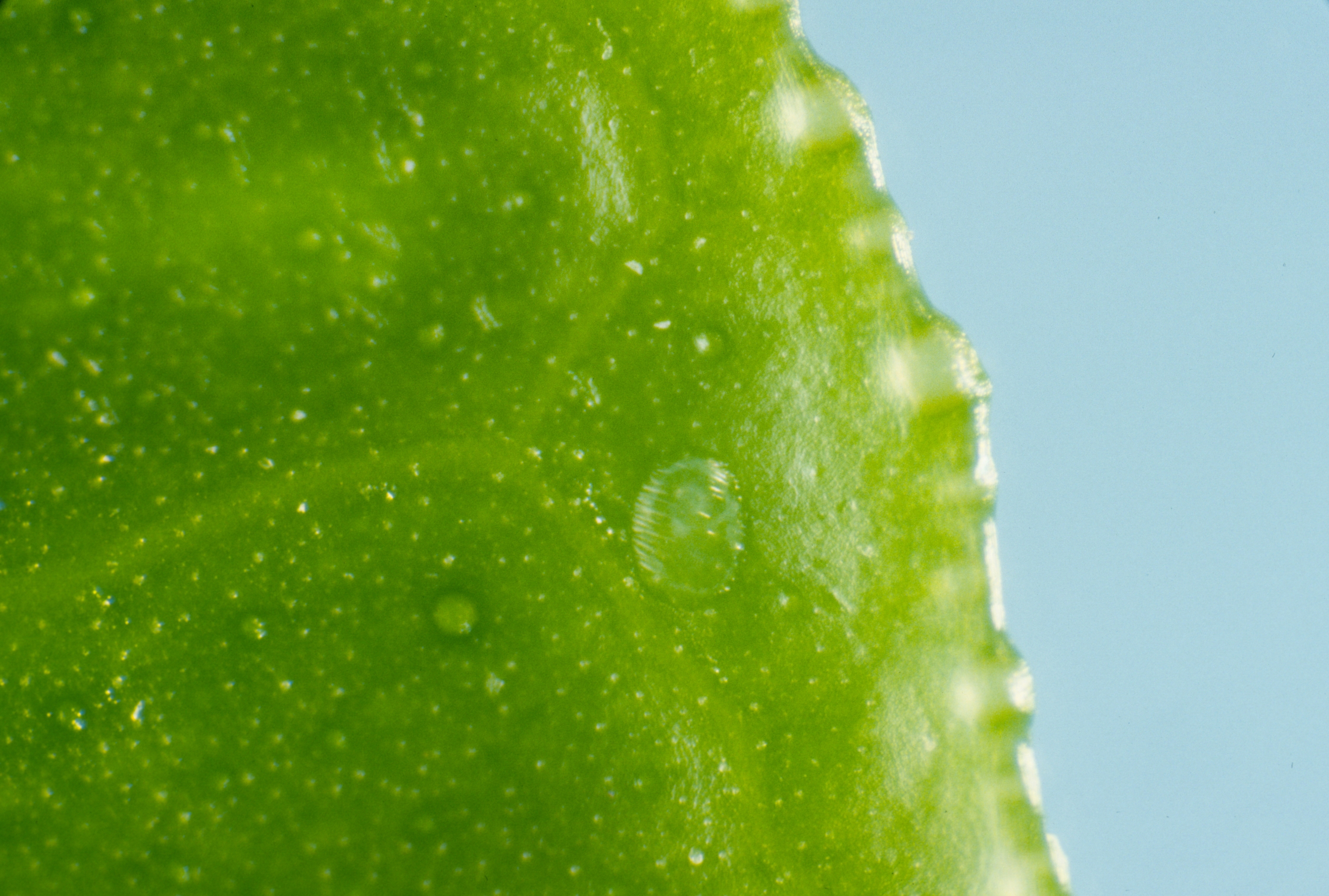
Larvae
There are 4 larval instars (stages). The first 3 feed only on sap from epidermal cells ruptured by their blade-like, finely toothed mouthparts. Due to air and condensed water vapour, each pale green larva forms a characteristic silvery, serpentine mine with a raised parchment-like skin (Figure 5) lined centrally with dark excreta. These larvae never leave their mines to form other mines or move between the lower and upper sides of leaves. Development of 3 stages takes about 5 or 6 days in summer. Mature third instar larvae are about 3 mm long.
The fourth instar (pre-pupa) is yellowish-brown (Figure 6) and resembles the third instar larva but it does not feed. It lasts for about one day in summer and uses silk produced from its mouthparts to form a pupal chamber. This chamber is usually located on the leaf margin (Figure 7), the edge of which is rolled over so that 3 sides of the chamber are formed from fresh leaf tissue and one by a thin layer of mined tissue. The chamber is formed as the delicate layer of silk produced by the pre-pupa dries and contracts. The exposed portion of the chamber is often a distinct orange but is otherwise similar to the colour of the mined leaf surface.
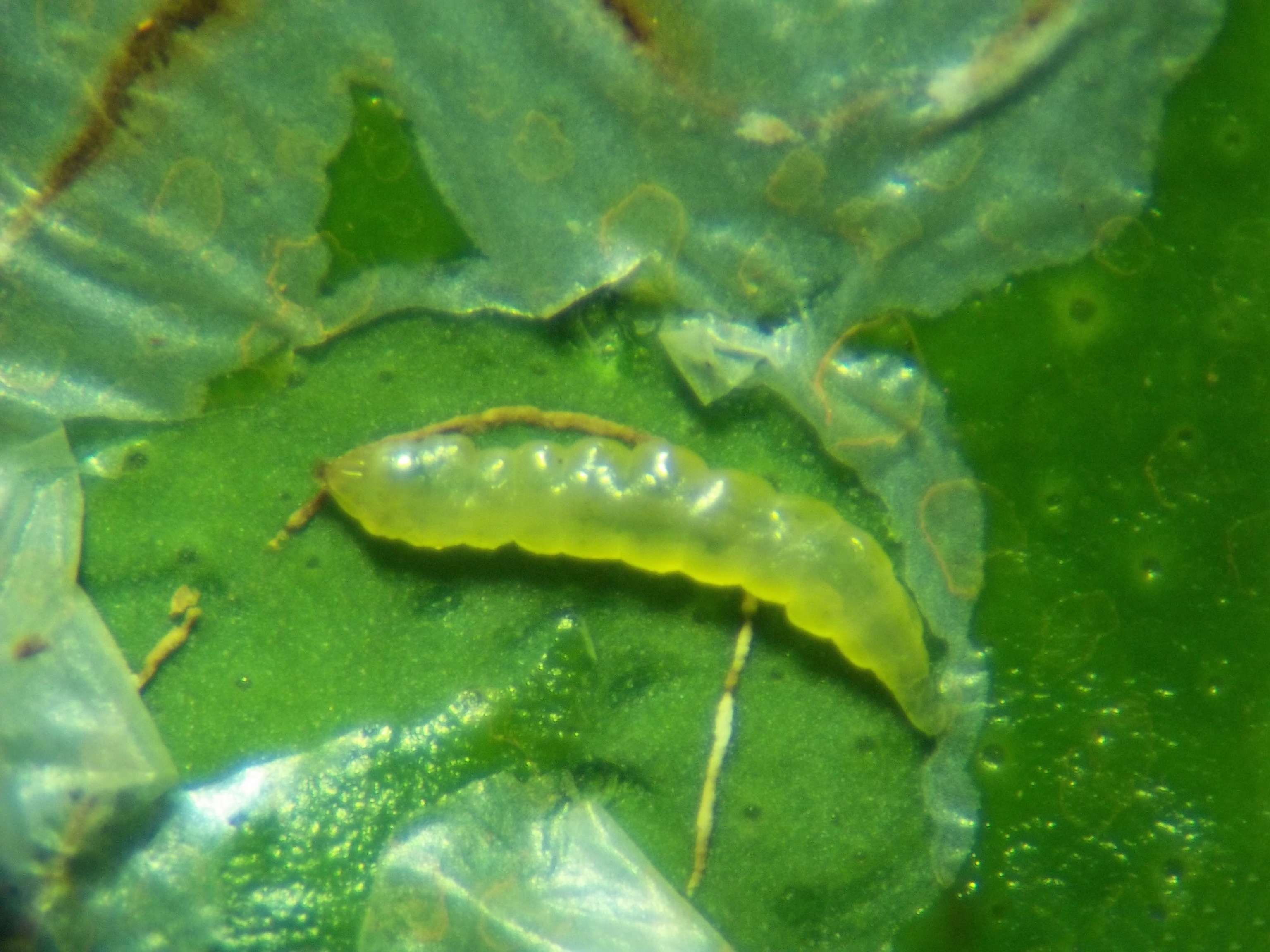
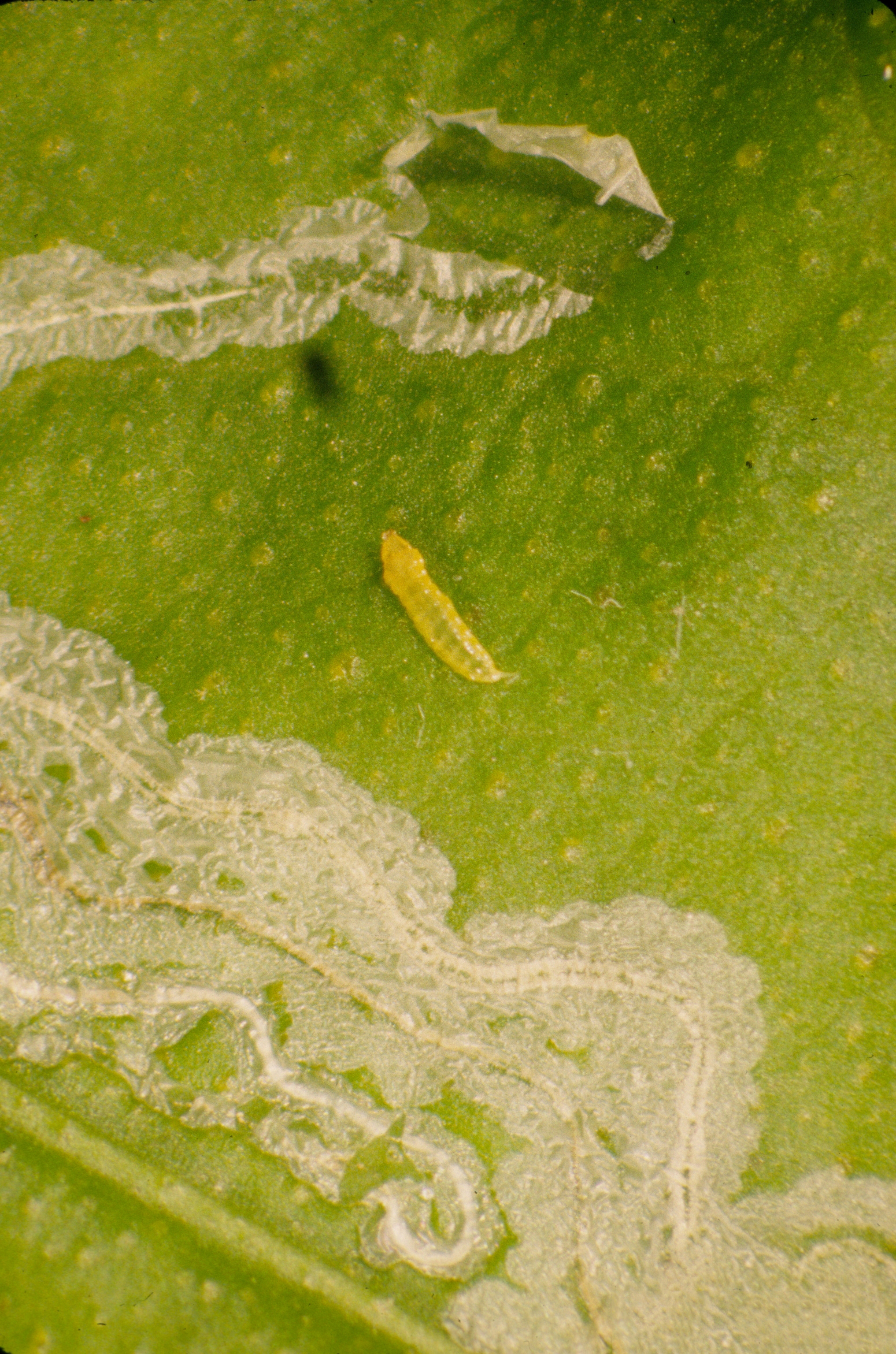
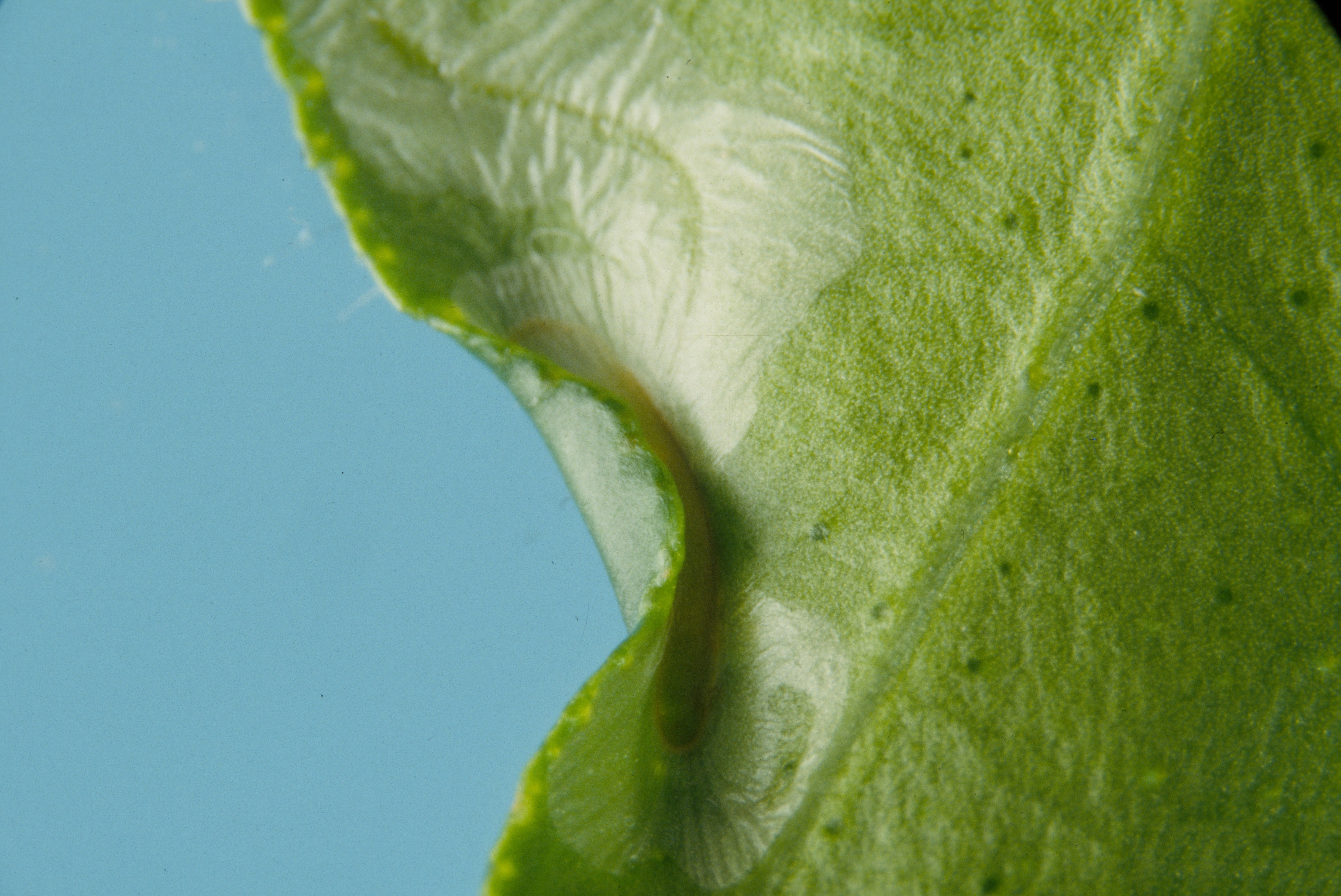
Pupae
The yellowish-brown pupae (Figure 8) are about 2.5 mm long. After about 6 days, a small opening is made at the anterior end of the pupal chamber (Figure 9) and the pupae force themselves partially through the openings. The adults then emerge and the cast pupal skins usually remain protruding from the chambers.
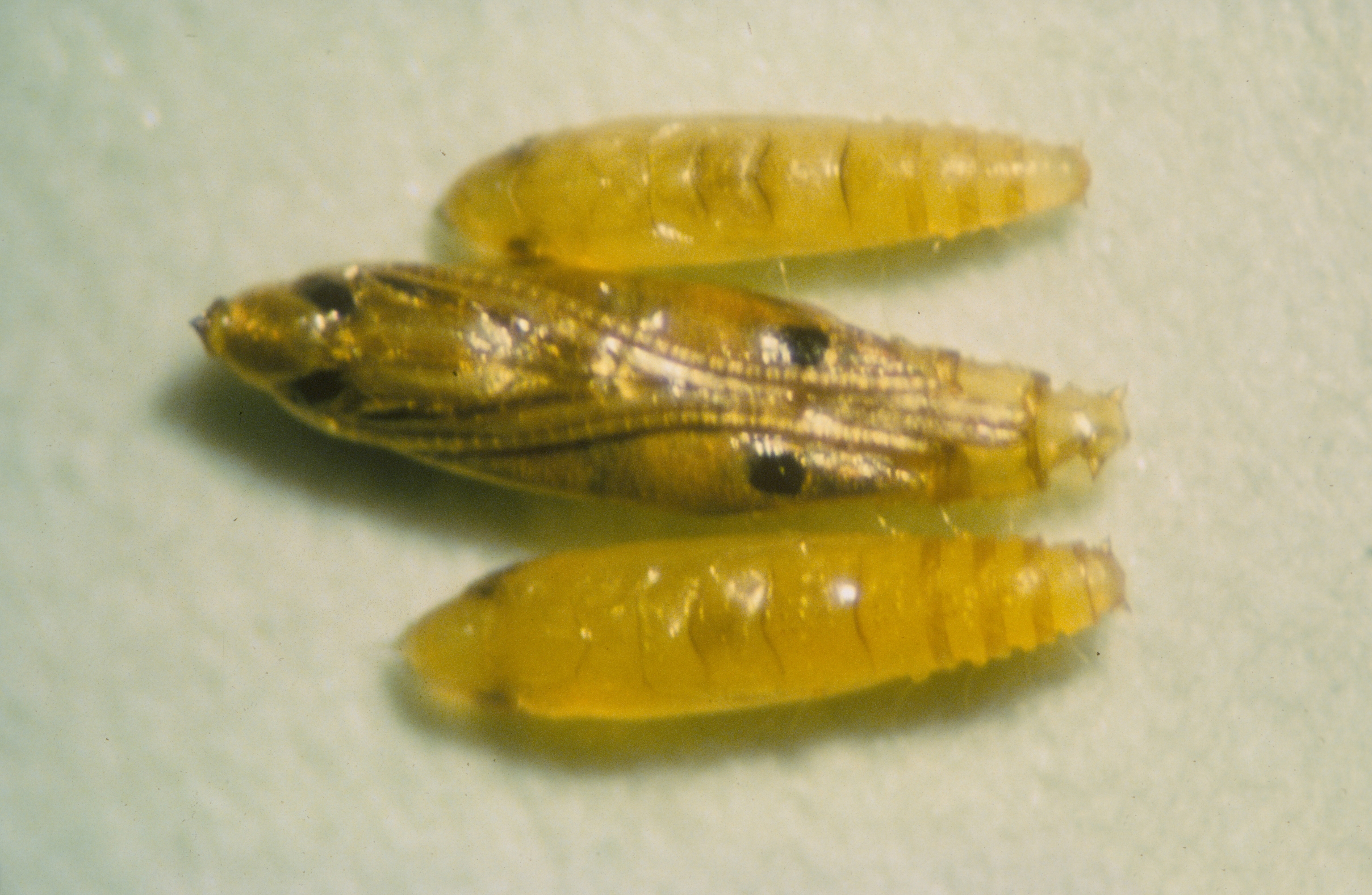
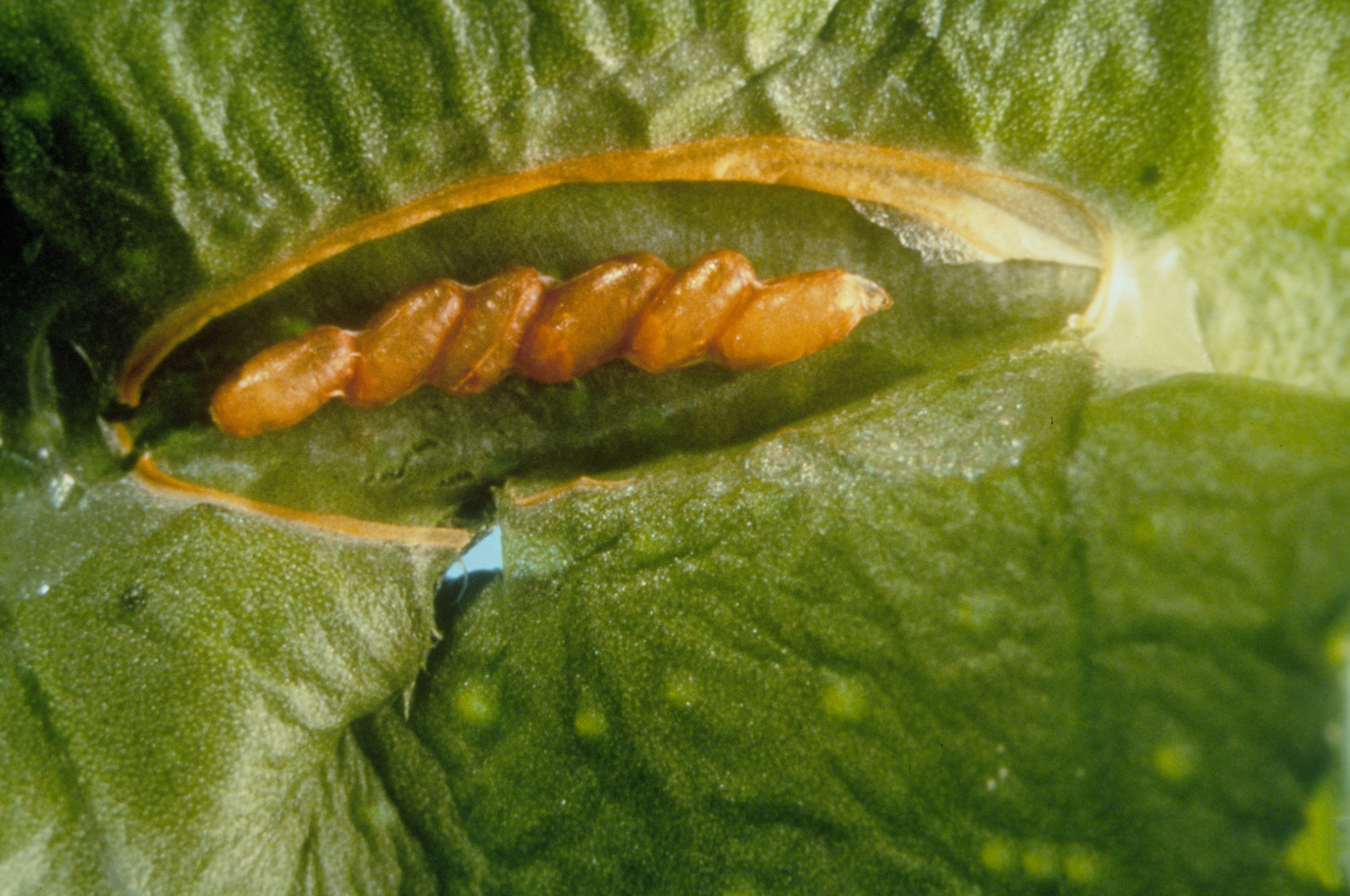
Control
Cultural control
As infestations are restricted to flush growth, particularly in late summer and autumn, their severity can be reduced by:
- fertilising in winter to promote flush growth in spring when the pest is either absent or relatively scarce
- limiting flush growth in late summer and autumn by only fertilising and irrigating in summer and autumn to the amount needed for normal growth.
Pruning late summer and autumn flush growth can also help limit and remove unsightly infestations on home garden trees.
Natural predators
These include small parasitic wasps and predators such as lacewings. The predators are generally associated with heavy infestations.
Three of the most effective wasps are Ageniaspis citricola (Figure 10 and Figure 11) and Cirrospilus quadristriatus (Figure 12; both introduced from South-East Asia in 1990–92) and Semiolacher petiolatus (Figure 13 and Figure 14), a native species. Parasitism by other wasps native to Australia (Cirrospilus ingenuus (Figure 15 to Figure 17), Sympiesis sp. and Zaommomentedon brevipetiolatus) has also been observed.
In the Riverina, Sunraysia and the Riverland, S. petiolatus is the major parasite. Parasitism levels are generally below 20% of all larvae in January–February but build to 50% or more in March–May. In Queensland, the levels of parasitism of larvae by A. citricola reach 90% by February–March, but S. petiolatus and Cirrospilus quadristiriatus are also important.
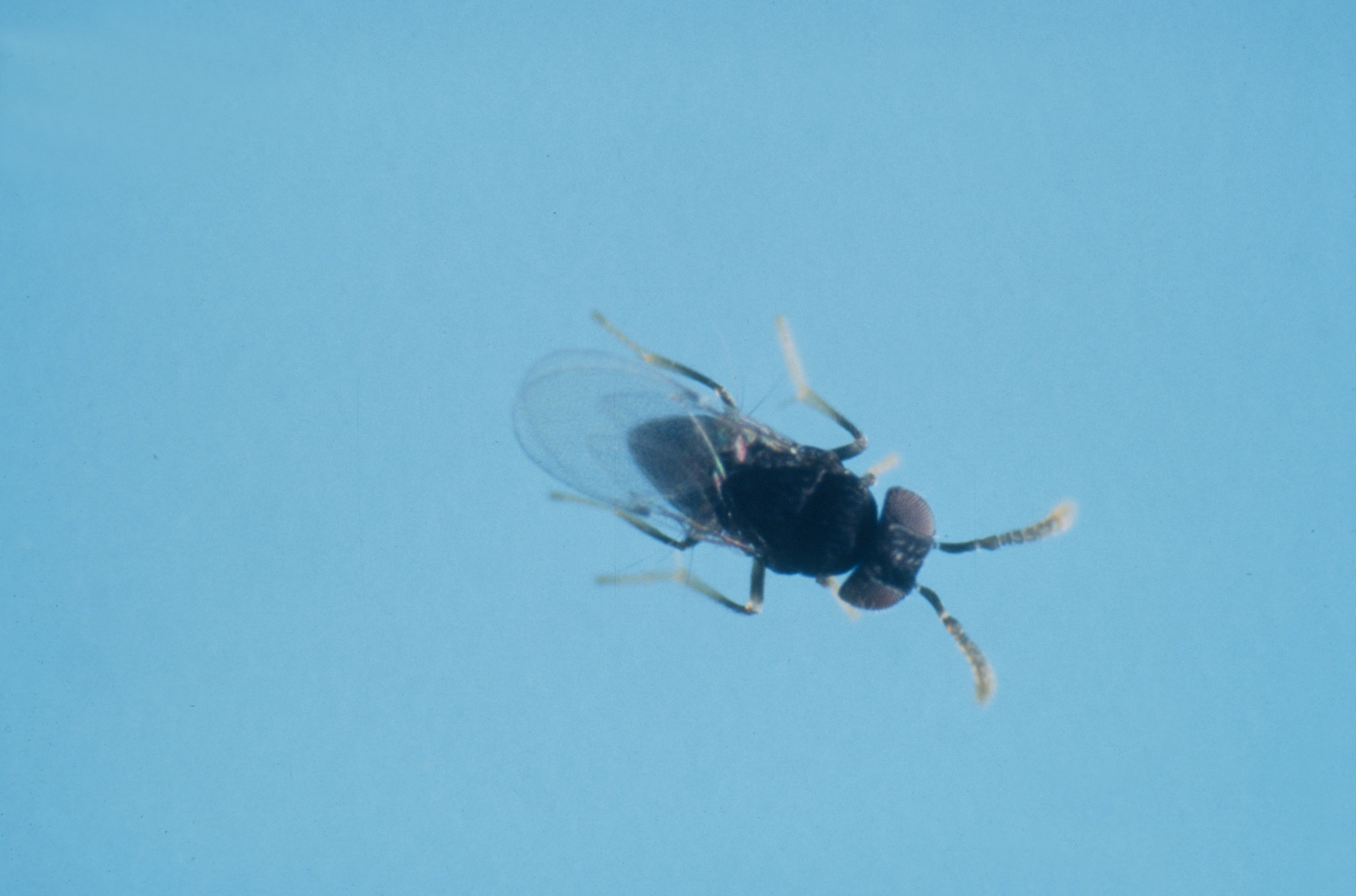
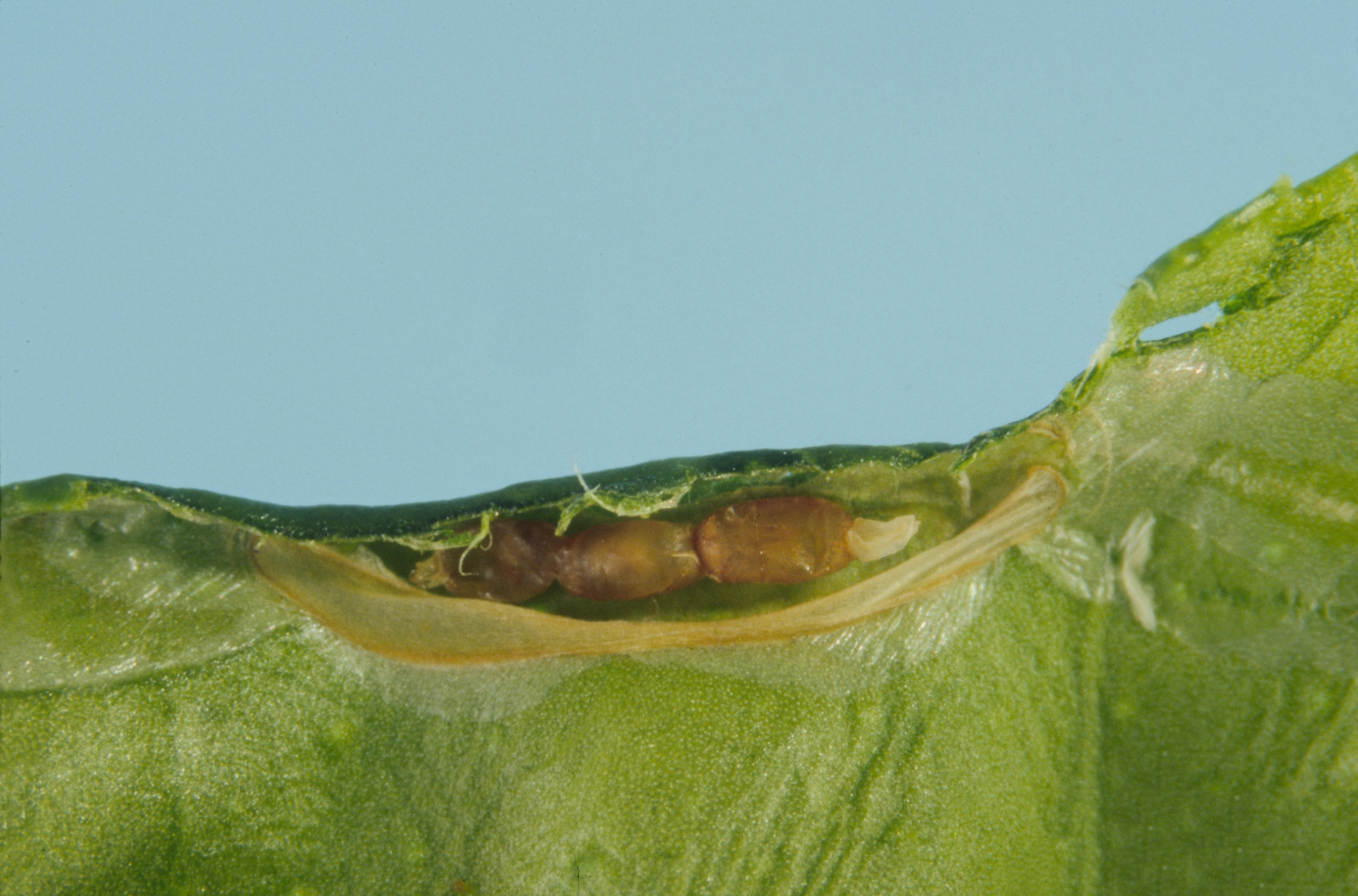
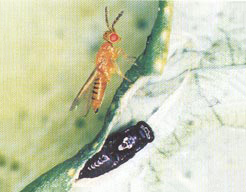
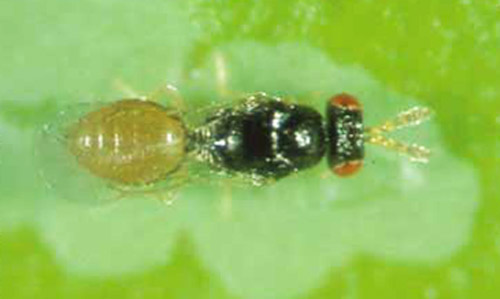
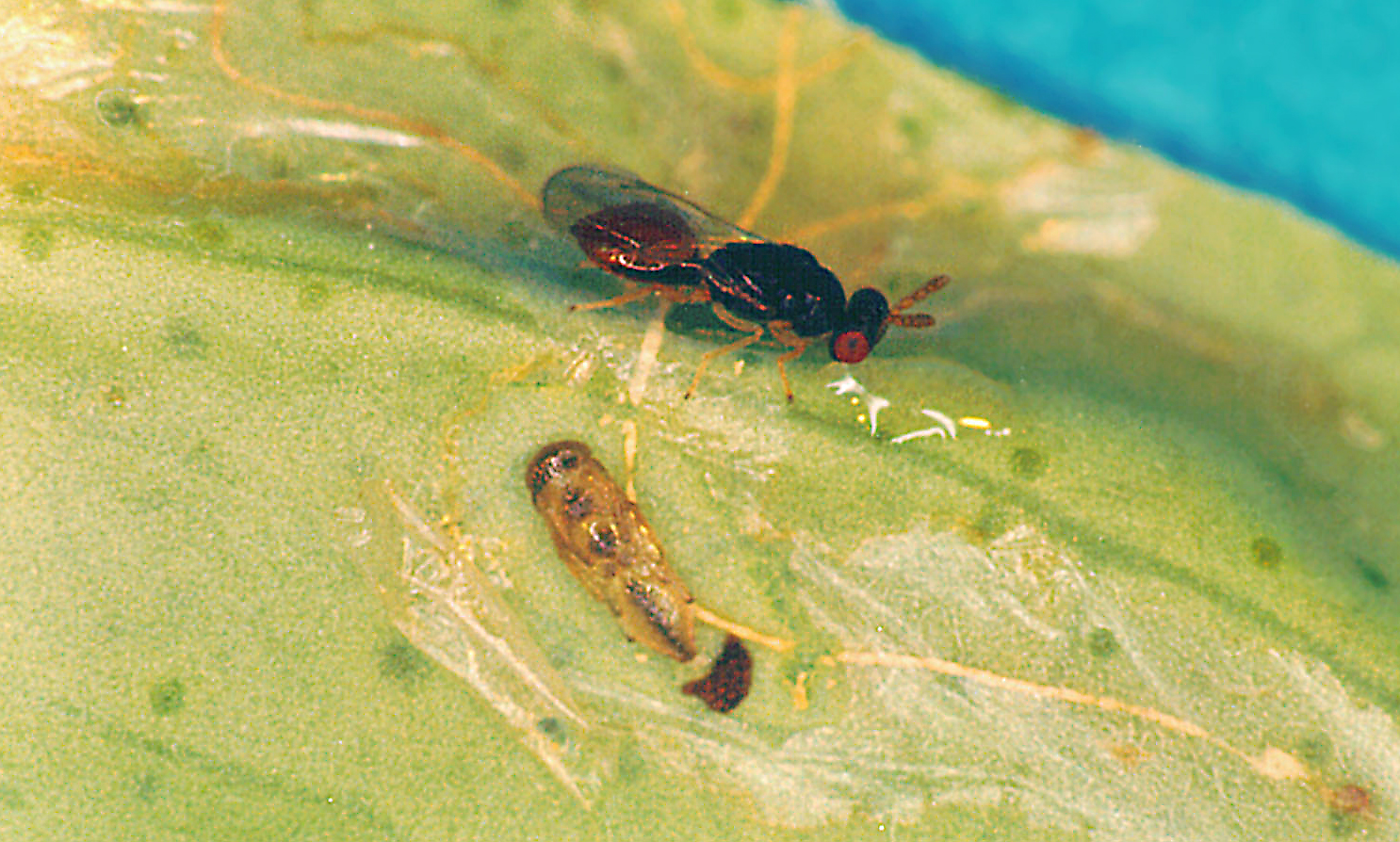
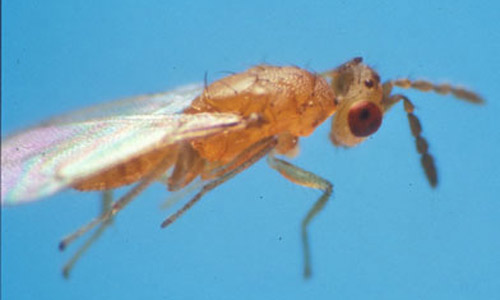
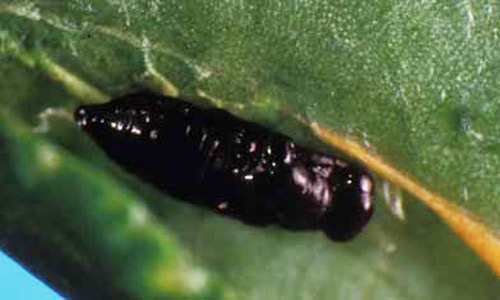
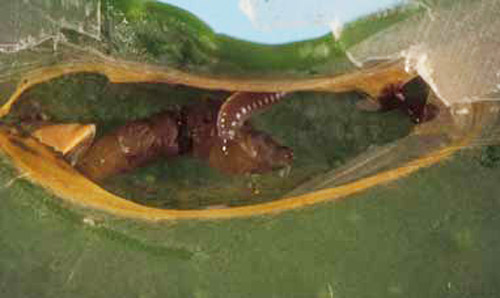
Chemical control
Effectively controlling citrus leaf miner using chemicals is difficult because larvae are protected by their mines and pupae are protected by their pupal chambers. Insecticides, such as organophosphates, carbamates, and pyrethroids, also disrupt the activity of natural enemies. Such disruption can lead to outbreaks of other pests (e.g. scales and mites).
Sprays are usually only required for control on young or vigorous trees in summer and autumn. Spraying immature flush on mature trees is generally only warranted for aesthetic reasons or to protect prolific growth that might occur if trees are heavily pruned in summer.
Spraying should begin as soon as the summer flush starts in mid to late January, before the first flushes reach 10 mm long. This will prevent rapid growth of leaf miner populations and reduce the risk of heavy infestations during peak periods of flush growth later in the season. Spraying should cease when most of the leaves produced within a flush cycle start to harden or are longer than 40 mm.
Sprays should be applied thoroughly to the upper and lower surfaces of susceptible leaves. They should generally be applied at 7-day intervals during warm to hot weather, and every 10 to 14 days during cooler weather. The number of sprays required depends on the citrus cultivar being treated and the duration of flushing. Lemon trees will generally require more sprays than orange, mandarin or grapefruit trees.
Horticultural mineral oils (HMOs) and agricultural mineral oils (AMOs) are generally as effective as insect growth regulators and broad-spectrum chemicals. Sprays applied to both susceptible and mature leaves will control some other pests (e.g. armoured scales, mites and some thrips) simultaneously and improve control of citrus leaf miner.
The oils are effective because adult female moths avoid sprayed surfaces and this leads to reduced egg-laying. Broad-spectrum insecticides and growth regulators are generally used to kill adults and immature stages, or to disrupt the development of some immature stages.
In addition to their effectiveness, the major advantages of using HMOs include:
- they can be handled with minimum protective clothing such as overalls, goggles and a facemask
- they have low toxicity to vertebrate animals
- they have little detrimental effect on beneficial insects and mites
- they do not stimulate outbreaks of pests
- pests have not developed resistance
- spray deposits are broken down within weeks by microbes, oxidisation and ultraviolet light to form simple molecules that do not pose a threat to the environment.
Guidelines for using HMOs and AMOs
- use concentrations ranging from 250 mL to 500 mL of oil per 100 L water (25–50 mL per 10 L water; 0.25–0.5%)
- use products formulated for dilution in water rather than products formulated for use without mixing in water
- sprays should be applied at volumes sufficient to wet the upper and lower surfaces of susceptible leaves to the point of run-off. They should be applied at 5 to 7-day intervals during warm to hot weather, and every 10 to 14 days during cooler weather. The number of sprays required depends on the citrus cultivar being treated and the duration of flushing
- in orchards, rotary atomisers and oscillating boom sprayers are more effective than conventional air-blast sprayers.
Precautions and compatibilities
HMOs and AMOs might damage plants (phytotoxicity) but this rarely occurs with modern formulations and can be avoided by correct use.
- aim to have the oil spray dry on the plant within 1–2 hours of application
- to prepare an oil spray, fill the spray tank with two-thirds of the water, add the oil whilst agitating the tank, then top up with the remaining water
- during application, oil and water mixtures held in spray tanks or containers must be continually and effectively agitated or stirred to prevent the oil separating from the water. Do not let the spray mix stand longer than 10 minutes. If you do, then rigorously agitate or stir before recommencing spraying
- do not apply too much oil annually
- do not apply oils in temperatures > 35 °C. Take care when applying sprays when the ambient shade temperature exceeds 32 °C
- do not apply sprays containing more than 250 mL of oil per 100 L water for at least one month after spraying with sulfur
- HMOs and AMOs are compatible with copper sprays up to a concentration of 0.5%
- do not spray when the soil is dry; trees must not be suffering from moisture stress
- always store oils in sealed drums, cans or brown bottles in a cool dark or dimly lit place. Oils stored in clear glass or plastic bottles will oxidise. Acids formed as a result of this process can be phytotoxic and ‘burn’ foliage and fruit, or, because they are hygroscopic (readily attract water), lead to them accumulating water on sprayed surfaces
- excessive use of mineral oil sprays can reduce yields by clogging up the water and food transport systems of the tree
- do not use oils that do not meet the standards required for HMOs and AMOs. Such products oxidise readily.
Acknowledgements
Recommendations for the use of HMOs and AMOs in this Primefact are based on research funded by the Horticultural Research and Development Corporation (now Horticulture Australia Limited), the NSW Horticultural Stock and Nurseries Act Ministerial Advisory Committee, the Australian Centre for International Agricultural Research, NSW Agriculture, the University of Western Sydney, Ampol Limited and Caltex Oil (Australia) Pty Ltd.

